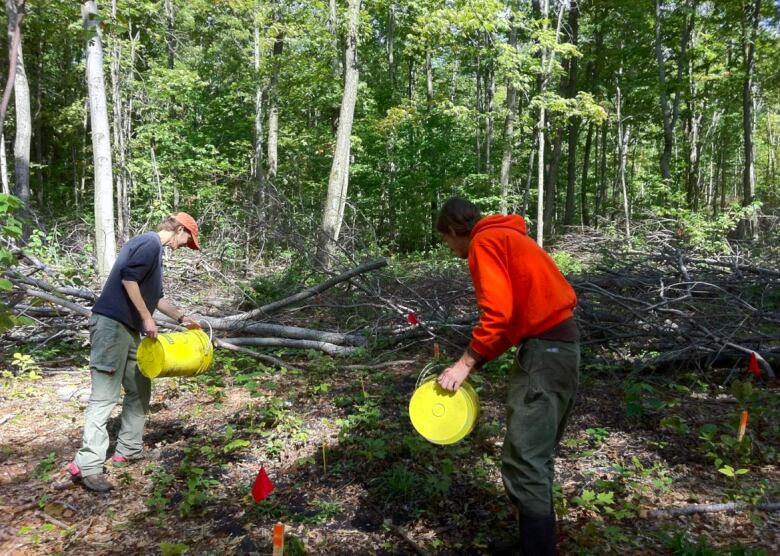Climate science goes underground to understand the implications for earthworms
Climate may affect essential earthworms worldwide, but Canada's story is a little different
A new study by a large team of researchers from around the world has looked at global earthworm diversity patterns that are influenced by climate to try and help anticipate how these valuable animals might be affected in a warming world.
But a Canadian researcher who contributed to the work suggests that the situation here is unique, because in Canada earthworms are an invasive species, and so the climate implications are complicated.
The study covered 57 countries, including Canada, and gathered data from nearly 7,000 sites
One of the Canadian contributors was was Sandy Smith, a professor of forestry at the University of Toronto.
Ecosystem engineers
Earthworms can have a transformative impact on their soil environments. As they tunnel and eat they way through their underground home, they help with soil stabilization, organic decomposition, and nutrient cycling. It is likely that these functions will change in a warming climate. In particular, drier conditions are likely to be bad for earthworm diversity and abundance, and this could have negative consequences for agriculture and wilderness areas..

Canada's situation is a bit different. The last glaciation wiped out Earthworms across much of our landscape and our forests grew on the ice-free landscape without them. In most of Canada the earthworm that you dig up in your garden, which might be good for your flowers and vegetables, is an invasive species.
Earthworms came across the Atlantic with European settlers. They spread with human activity, including fishing and agriculture, and by being transported in car and ATV tires. Their progress across the country has been difficult to stop,
Earthworms are changing our forests
Our forests, in particular our boreal forests, are adapted to life without earthworms, and invasive worms are thought to be having negative influence on the forests.
Because earthworms consume organic matter, they change the amount of moisture in the soil. This can influence the growth of young trees in the forest. The loss of leaf litter on the forest floor, consumed by worms, also means that some plants have nowhere to establish roots, and therefore do not survive. By changing the landscape and forests in this way, earthworms are actually influencing climate.

Earthworms are also changing the microbial community in our forests. Their activity results in less fungi, which makes for healthy soil for plants to grow. This shift results in fewer plants for animals like the vegetarian mole and vole to eat, and therefore a reduction in their population. On the other hand deer mice, who are omnivores thrive. Deer mice carry ticks, so an increase in their population could have negative implications for humans. These cascading changes are referred to an an invasion meltdown.